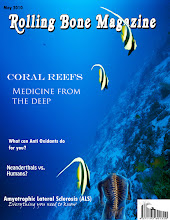
Written by: Victoria Machin
In 1952, extensive knowledge was known regarding DNA, including its select role as genetic material. What was not known at the time, was the structure and how this arrangement of atoms performed their hereditary function. In the course of a single year, the now familiar double helical structure of DNA, a twisted ladder with base-pairs rungs essential to its hereditary function, would be revealed. Often associated with this noteworthy discovery are scientists James Watson and Francis Crick. Along with Maurice Wilkins, Watson and Crick were awarded with the 1962 Nobel prize for Physiology and Medicine. Yet a female scientist's contribution to the breakthrough was essential. Rosalind Franklin was recognized by the Nobel Committee in 1962 for her imperative assistance at the time of the findings.
At the age of fifteen, Rosalind Franklin decided she would be a scientist. She was factual, logical and precise; she would become a women scientist of much controversy through her relatively short life. Born July 25th, 1920 in London, England, Franklin excelled at science and attended one of the few girls' schools in London that taught physics and chemistry. In 1938, at the age of eighteen, she passed the examination for admission at Cambridge University. After graduating in 1941, she began work on her doctorate; working on the efficient use of coal and charcoal. Her efforts helped launch the field of high-strength carbon fibers. At the age of twenty six, Franklin, having her PhD, started working in x-ray diffraction, using x-rays to create images of crystallized solids. A pioneer, she used the method of x-ray diffraction in analyzing complex, unorganized matter such as large biological molecules, as appose to single crystals.
After spending three productive and enjoyable years in Paris at the Laboratories Central des Services Critiques de L'Etat, where she learned x-ray diffraction techniques, she was invited to King's College in London to join John Randall's laboratory studying living cells. Randall selected Franklin to study DNA with a graduate student. The graduate student, Maurice Wilkins was away at the time, and when he returned he misunderstood her role, behaving as though she were a technical assistant. Though in reality the two were peers. In the coming years, their differences would play a role in the unfolding of the structure of DNA.
Franklin persisted with her exceptional x-ray diffractions. Between 1951 and 1953 Franklin became very close to solving the structure of DNA. Unfortunately, she was beaten to publication by Crick and Watson. At the time, she was unaware that Wilkins showed Watson one of Franklin's crystallographic portraits of DNA. Subsequent to Watson viewing the image, the solution became evident to him, and the results were published in the article Nature. In the same issue, Franklin's work did appear in a supporting article in the same issue of the journal.
The strained relationship with Wilkins, as well as other aspects of King's college, led Franklin to seek another position. She headed her own research group at Birkbeck College in London. She concentrated on viruses, publishing seventeen papers in five years.Her group's findings laid the foundation for structural virology.
In the April of 1958, Rosalind Franklin died at the age of thirty seven, to ovarian cancer. She died with a reputation around the world for her contributions to the understanding of carbon structures and viruses. After her death, Watson and Crick marked that they could not have discovered the structure of DNA without the work of Franklin. Sadly, she could not be cited for her essential role in the discovery of the physical bass of genetic heredity. The Nobel Prize was not awarded to her because it is not awarded posthumously.
Bibliography:
Work
Ardell, David. The National Health Museum. 25 October 2006. 28 April 2010
Maisel, Merry and Laura Smart. Women in Science. 1997. 28 April 2010
Online, PBS. A Science Odyssey: People and Discoveries. 1998. 28 April 2010
Figure
Online, PBS. A Science Odyssey: People and Discoveries. 1998. 28 April 2010

No comments:
Post a Comment